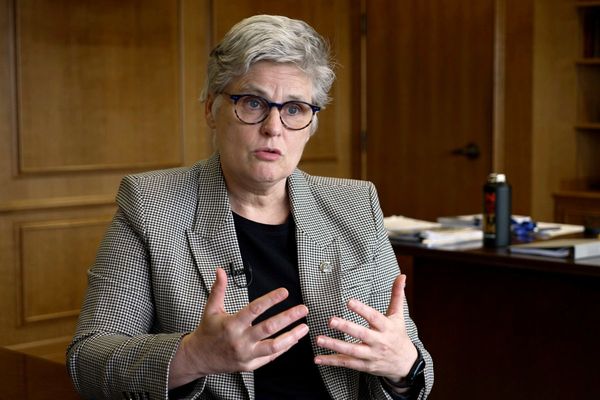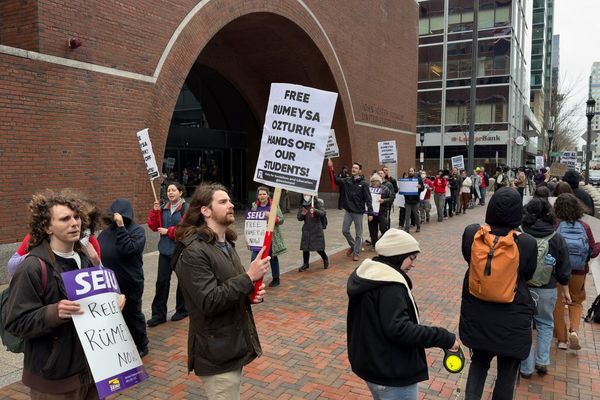
In a dimly lit cubicle in a gay sauna sits John, naked except for a towel. Beyond the partitions, in the porn room and the glory hole section, other men are prowling, sizing one another up and having sex. But John’s not here for sex. Against all the odds, John’s looking for love.
Lloyd Newson’s latest work for DV8, the company he has led since 1986, is not easy to watch. It centres on the true story of John (Hannes Langolf), a man hollowed out by experiences so dark that few would survive them. Anna Fleischle’s set is a revolving carousel of timber-framed walls and revolving doors, a perfect representation of the chaos of John’s early life, in which wife-beating, rape and incest are only a thin partition away, and of the bleak catacomb of the sauna. Having witnessed his mother’s death from a heroin overdose, John is taken into care, becomes addicted to drugs himself, and is eventually imprisoned for a violent crime of which he has no memory.
Once released, the only community in which he feels at home is that of the sauna. Newson tells us John’s story through intertwined passages of verbatim speech and fluently choreographed movement. These are unsparing, and the individuals who surround him, from the sadistic father who rapes John’s sister to the HIV-positive teacher who makes phone assignations on Grindr during lessons and expounds at length on the “intimacy” of no-condom sex, are often repugnant. As is John’s chosen world; in one scene the sauna staff philosophically describe the daily task of cleaning the customers’ shit from the walls, showers and Jacuzzi.
But the work is redeemed by John’s self-deprecating honesty, and by Newson’s compassionate purpose. His intention is not to batter us with gratuitously sordid detail, but to define love by showing us the ways in which life is deformed by its absence. As each tableau overlays the last, this absence takes clearer and more luminous shape. It’s certainly apparent to John, sitting in his cubicle, waiting for the door to open, hoping against hope.

In Torobaka, kathak dancer Akram Khan and flamenco artist Israel Galván have come together to explore common ground. Both dancers have roots in a classical tradition; both have tested the boundaries of their respective forms. The piece is performed in a tight circle of light. Outside the circle sit five musicians, who accompany Khan and Galván with stamping, clapping, percussion, and polyphonic songs in Sanskrit, Basque and Italian.
The two dancers square off like fighters, but undercut any suggestion of confrontation with goofy humour. They clearly get along famously. Galván is all wiry machismo and rapid fire heel taps. His arms whirl like knives and curve like bullhorns. Khan’s movements have the sheen of an unrolling bolt of silk. His arms wreathe around his body like flames, every finger in wavering motion.
These contrasts are engaging, and the discrete elements of the production – Michael Hulls’s tightly focused lighting, the harsh beauty of the chanting – are compelling. But Torobaka lacks shape and forward impulse, and, unlike Khan’s solo work Desh, is never more than the sum of its parts. It was announced last week that Khan is to create a new Giselle for English National Ballet. We live in interesting times.
- John is at the National Theatre, London SE1 until 13 January 2015, then touring. The production will be screened in cinemas nationwide from 9 December via National Theatre Live
Star ratings (out of five)
John****
Torobaka ***







